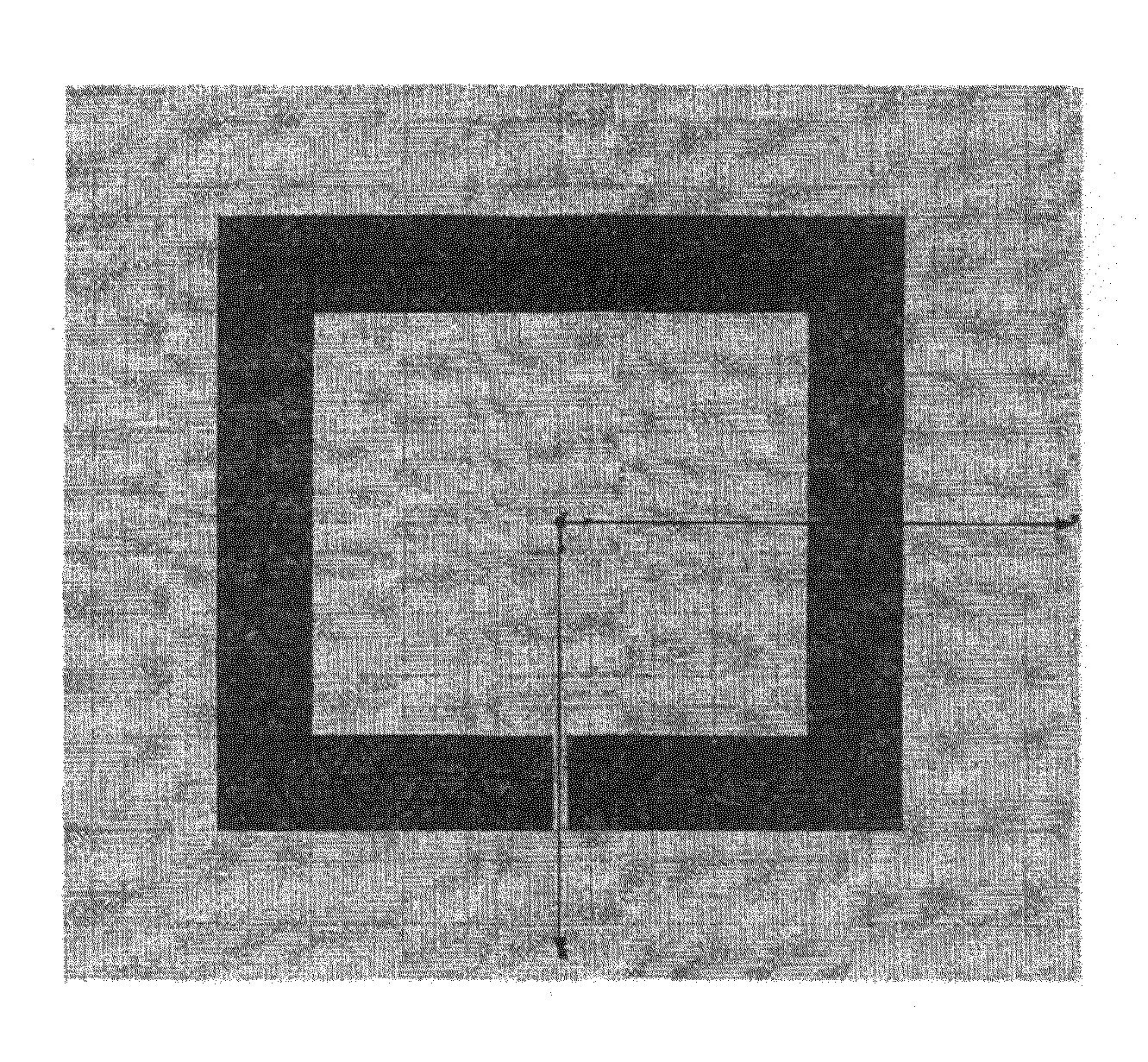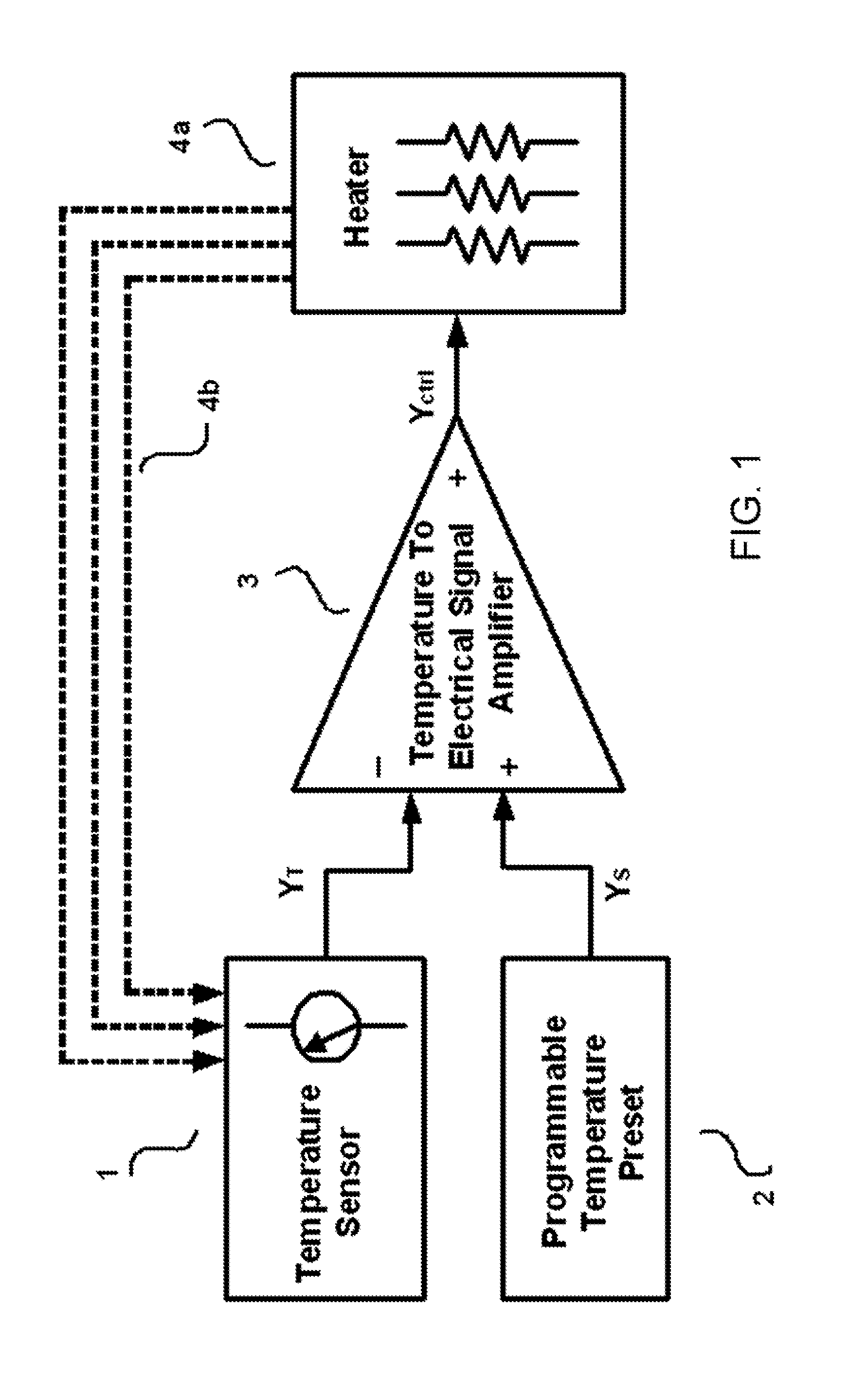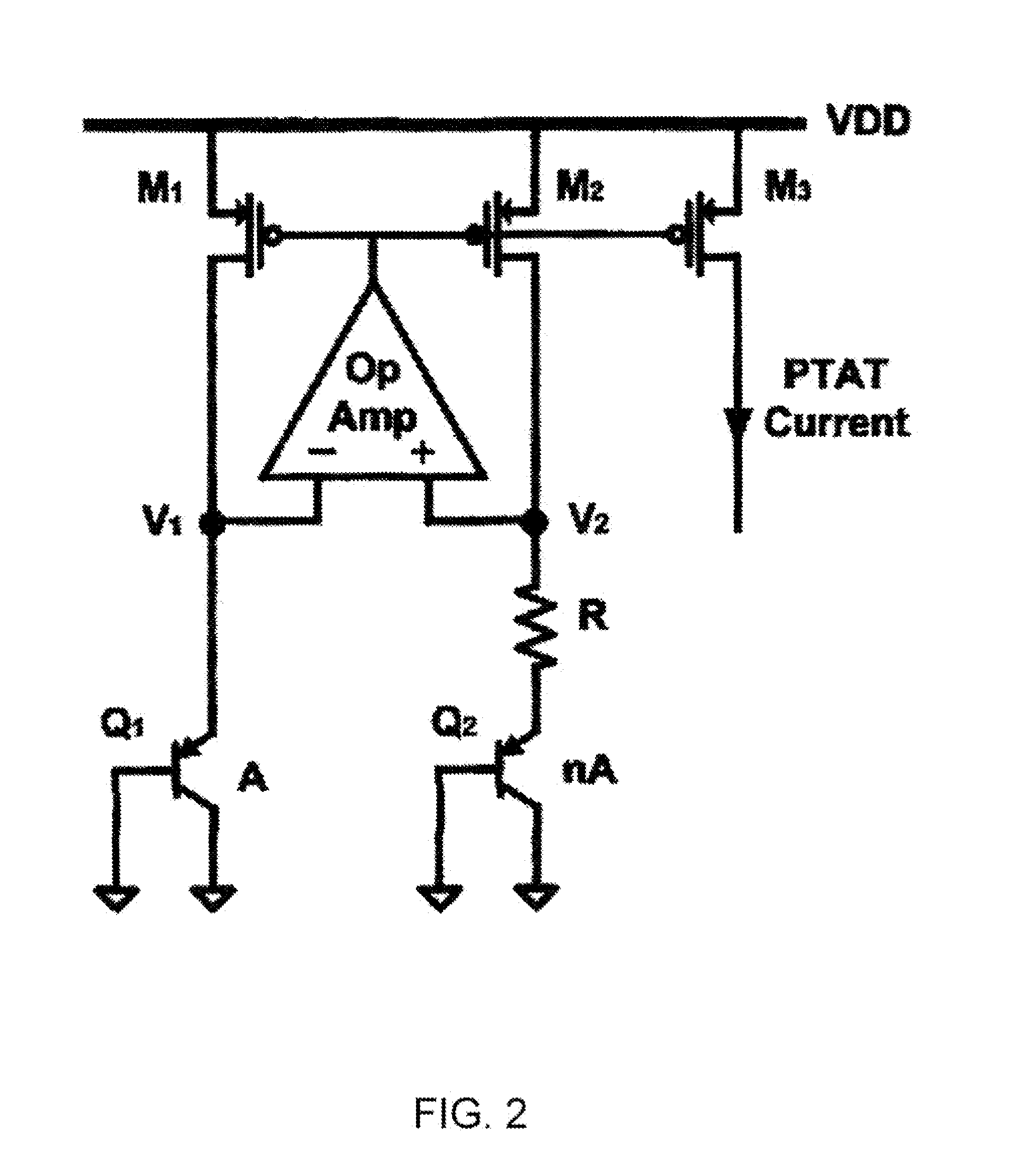Frequency-shift CMOS magnetic biosensor array with single bead sensitivity and no external magnet
a biosensor array and biosensor technology, applied in the field of magnetic sensors, can solve the problems of increasing the size and total power consumption of the system, affecting the accuracy of the signal,
- Summary
- Abstract
- Description
- Claims
- Application Information
AI Technical Summary
Benefits of technology
Problems solved by technology
Method used
Image
Examples
example
[0147]Turning now to experimental results from one exemplary test setup, FIG. 29 shows a graph of frequency (Hz) plotted versus time (0.2 seconds / unit) for alternate frequency counting of two sensors, a target or active sensor and a reference sensor. The alternate frequency counting was done for the active sensor (Freq_Target) and the reference sensor (Freq_Ref) with an acquisition time of 0.1 s for every count. Significant frequency drifting can be seen.
[0148]FIG. 30 shows a graph of differential sensing (performing subtraction of the frequency counting results of the two sensors) plotted as frequency difference (Freq_Diff) in Hz versus time (0.2 s per unit). It can be seen that the common frequency drift (e.g. as shown in FIG. 29) is greatly suppressed. This shows how the differential sensing scheme can effectively remove common-mode perturbations between the active sensor and the reference sensor, including such perturbations as power supply noise, temperature change, mechanical ...
PUM
 Login to View More
Login to View More Abstract
Description
Claims
Application Information
 Login to View More
Login to View More - R&D
- Intellectual Property
- Life Sciences
- Materials
- Tech Scout
- Unparalleled Data Quality
- Higher Quality Content
- 60% Fewer Hallucinations
Browse by: Latest US Patents, China's latest patents, Technical Efficacy Thesaurus, Application Domain, Technology Topic, Popular Technical Reports.
© 2025 PatSnap. All rights reserved.Legal|Privacy policy|Modern Slavery Act Transparency Statement|Sitemap|About US| Contact US: help@patsnap.com



